Best time to visit Lonavala & Khandala You can come here any time of the year, especially in winter, from October to April. Summer temperatures reach a maximum of 36° C and touch minimum temperatures of 12° C in winter. .
Sights to see in Lonavala & Khandala : Numbered amongst the many local attractions are forts, caves and lakes. The rock escarpments in the hills provided vantage positions for fortresses and fortifications of the powerful Maratha kingdom established by Shivaji. The imposing Rajmachi Fort can be approached only on foot as it sits surrounded by deep valleys on three sides and a thick forest on the fourth. Other equally impressive forts are the Manoranjan Fort, Shrivardhan fort, Visapur Fort, Lohagad Fort and the Tunga Fort with arsenals and guardhouses.
HOW TO REACH
By Air:-
Lonavala & Khandala do not have airports so one has to fly to Bombay or to Pune. The nearest international airport is Bombay (110 km) and domestic airport is Pune (66km).
By Rail:-
The railways bring Khandala and Lonavala to life, connecting trains are available from Mumbai Central Station and Pune Junction. All the trains halt at Khandala before travelling onto to Lonavala.
By Bus:-
The Mumbai-Bangalore National Highway connecting southern and western India passes through Khandala -Lonavala. The drive winds its way up tiers of ghats including the arduous Khopoli – Khandala Ghat. Within a short distance of 8 km the road ascends to a height of 369 m but the picturesque countryside makes it worth it all. State roadways buses, private buses, taxis and tour operators have regular services to the hill resorts of Lonavala & Khandala.
WHAT TO SEE
Shivaji Park:-
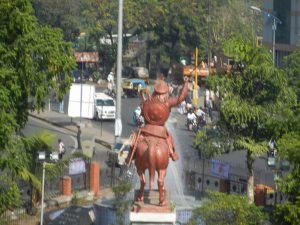 Shivaji Park was converted into a garden from a playground in 1956. Once a playground, the park is also home to a statue of Chhatrapati Shivaji. Within the beauty of the park, tourists can relax and enjoy a family picnic.
Shivaji Park was converted into a garden from a playground in 1956. Once a playground, the park is also home to a statue of Chhatrapati Shivaji. Within the beauty of the park, tourists can relax and enjoy a family picnic.
Visapur Fort:-
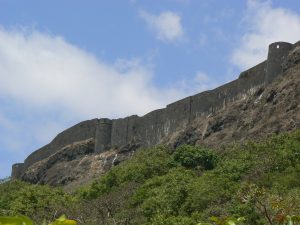 Visapur Fort has a huge plateau surrounding it. Located to the east of Lohagad Fort, it is famous for its protective walls and intricate designs. In the forest at the centre of the fort lies the guards’ residences in ruins. A gun turret made of copper lies to the right side of the fort. Between Visapur and Lohagad Forts, there is a pass of 1 – 15 furlongs. From the railway bridge at Lonavala Station, tourists can catch a glimpse of a semicircular pass. Folklore legend states that this valley was crossed by a brave woman on a rope. Located at an altitude of nearly 4,000 ft above sea level, the fort can be reached by a trekking expedition. Built during the rule of the Maratha dynasties, the fort was used by Chhatrapati Shivaji to watch the movements in the downhill and the plains.
Visapur Fort has a huge plateau surrounding it. Located to the east of Lohagad Fort, it is famous for its protective walls and intricate designs. In the forest at the centre of the fort lies the guards’ residences in ruins. A gun turret made of copper lies to the right side of the fort. Between Visapur and Lohagad Forts, there is a pass of 1 – 15 furlongs. From the railway bridge at Lonavala Station, tourists can catch a glimpse of a semicircular pass. Folklore legend states that this valley was crossed by a brave woman on a rope. Located at an altitude of nearly 4,000 ft above sea level, the fort can be reached by a trekking expedition. Built during the rule of the Maratha dynasties, the fort was used by Chhatrapati Shivaji to watch the movements in the downhill and the plains.
Lohagad Fort:-
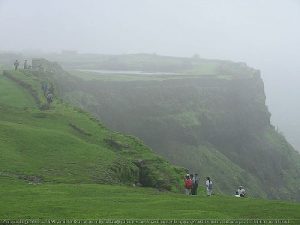 Lohagad Fort lies at an elevation of 1,052 m. One of the many hill forts of Chhatrapati Shivaji, the fort divides the basins of the Indrayani and Pavana. Situated on a side range of the Sahyadris, the fort is guarded by four large gates. On the eastern side of this fort lies the Visapur Fort. Several structures in the fort such as a big tank and a step-well (bawali) were constructed during the Peshwa Period by Nana Phadnavis (1742-1800 AD). There is a long and narrow wall like fortified spur called Vinchukata on the west side of the fort. Historical evidence states that the fort was also ruled by Satavahanas, Chalukyas, Rashtrakutas, Yadavas, Bahamanis, Nizamshahis, Mughals and Marathas.
Lohagad Fort lies at an elevation of 1,052 m. One of the many hill forts of Chhatrapati Shivaji, the fort divides the basins of the Indrayani and Pavana. Situated on a side range of the Sahyadris, the fort is guarded by four large gates. On the eastern side of this fort lies the Visapur Fort. Several structures in the fort such as a big tank and a step-well (bawali) were constructed during the Peshwa Period by Nana Phadnavis (1742-1800 AD). There is a long and narrow wall like fortified spur called Vinchukata on the west side of the fort. Historical evidence states that the fort was also ruled by Satavahanas, Chalukyas, Rashtrakutas, Yadavas, Bahamanis, Nizamshahis, Mughals and Marathas.
Bhaja Caves:-
 Bhaja Caves are a set of rock-cut caves that are counted among the oldest of early Buddhist rock temple art in India. Comprising a group of 22 rock-cut caves, these date from around the 2nd century BC. Historians believe that the caves belong to 200 BC; and hence, are regarded to be from the time…
Bhaja Caves are a set of rock-cut caves that are counted among the oldest of early Buddhist rock temple art in India. Comprising a group of 22 rock-cut caves, these date from around the 2nd century BC. Historians believe that the caves belong to 200 BC; and hence, are regarded to be from the time…
Dhobi Waterfall:-
 Dhobi Waterfall is located 3 km away from Mahabaleshwar, on the path, which connects Petit road with Old Mahabaleshwar road. Water from the fall drops into a deep valley and finally merges with Koyna River. Owing to the location amidst beautiful valley, this waterfall is a popular picnic.
Dhobi Waterfall is located 3 km away from Mahabaleshwar, on the path, which connects Petit road with Old Mahabaleshwar road. Water from the fall drops into a deep valley and finally merges with Koyna River. Owing to the location amidst beautiful valley, this waterfall is a popular picnic.
Karla, Bhaja and Bhedsa Cave temples:-
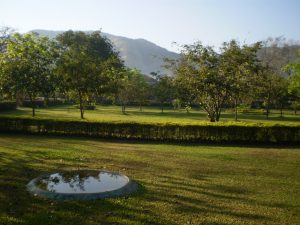 The Karla, Bhaja and Bhedsa Cave temples are perfect examples of the early phase of Buddhist architecture known as the Hinayana phase, wherein, the Buddha was represented symbolically. The characteristic features of these early temples were two establishments, each self-contained and consisting of a prayer hall (chaitya) and a monastery (vihara), which contained accommodation for the monks. The square central hall was approached through a verandah or portico and doorways led into cells for members of the brotherhood.
The Karla, Bhaja and Bhedsa Cave temples are perfect examples of the early phase of Buddhist architecture known as the Hinayana phase, wherein, the Buddha was represented symbolically. The characteristic features of these early temples were two establishments, each self-contained and consisting of a prayer hall (chaitya) and a monastery (vihara), which contained accommodation for the monks. The square central hall was approached through a verandah or portico and doorways led into cells for members of the brotherhood.
Reversing Station:-
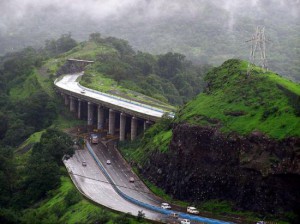 Reversing Station enables tourists to enjoy a beautiful view of the surroundings and the shine of lights from the distant Khopoli Town. This unused and secluded site was once used by the railway department. Near the station, tourists can find an advertisement hoarding of Amrutanjan that lies outside tunnel number 26. The point is visited by tourists to enjoy a view of Duke’s Nose. From the viewpoint, tourists can also get an aerial view of the trains changing lines on either side. The site is also popular for providing a view of the Khopoli Town. This unused and secluded site once used to be the office of the railway department.
Reversing Station enables tourists to enjoy a beautiful view of the surroundings and the shine of lights from the distant Khopoli Town. This unused and secluded site was once used by the railway department. Near the station, tourists can find an advertisement hoarding of Amrutanjan that lies outside tunnel number 26. The point is visited by tourists to enjoy a view of Duke’s Nose. From the viewpoint, tourists can also get an aerial view of the trains changing lines on either side. The site is also popular for providing a view of the Khopoli Town. This unused and secluded site once used to be the office of the railway department.
Tungarli Lake:-
 Tungarli Lake is the major source of water supply for Lonavala. An artificial reservoir, it has been built across the Tungarli Lake. Located near Rajmachi, the area surrounding the lake is a famous weekend picnic spot. From the Tungarli Village, in which the lake is situated, tourists can get an aerial view of Rajmachi, Lonavala and Lohagad located below. Tungarli Village sits in the hills of the Sahyadri Ranges. Constructed in the 1930s during the British era, the dam enables the irrigation of the Rajmachi Region. Back-pack camping at the site is a favourite with the trekkers, who trek the trail to reach the lake and dam. During the monsoon season.
Tungarli Lake is the major source of water supply for Lonavala. An artificial reservoir, it has been built across the Tungarli Lake. Located near Rajmachi, the area surrounding the lake is a famous weekend picnic spot. From the Tungarli Village, in which the lake is situated, tourists can get an aerial view of Rajmachi, Lonavala and Lohagad located below. Tungarli Village sits in the hills of the Sahyadri Ranges. Constructed in the 1930s during the British era, the dam enables the irrigation of the Rajmachi Region. Back-pack camping at the site is a favourite with the trekkers, who trek the trail to reach the lake and dam. During the monsoon season.
Rajmachi Fort:-
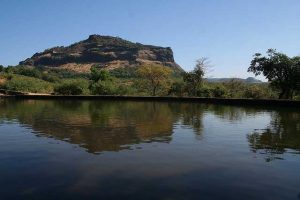 700 ft, the fort at Manaranjan Peak consists of 3 doors, numerous water tanks and walls..Rajmachi Fort is located mid-way between Khandala and Lonavala. To reach the fort, tourists can follow a trekking trail from Tungarli Lake. Standing on Shrivardhan and Manaranjan Peaks, the fort overlooks the highway from Khopoli Town to Khandala-Lonavala Junction. Known as Borghat, this path was once a historical trade route. Located on the top of the Western Ghats, the complex comprises two forts that are individually located at the Shrivardhan and Manaranjan Peaks. Between the peaks, there is a small plateau that connects the Manaranjan and Shrivardhan Peaks. Known as ‘Bale killa’, the fort that is positioned atop the Shrivardhan Peak has an elevation of 3,000 ft. Built to monitor the activities in the Konkan Area, the fort enables tourists to get an aerial view of Rajmachi. Situated at a height of about 2,
700 ft, the fort at Manaranjan Peak consists of 3 doors, numerous water tanks and walls..Rajmachi Fort is located mid-way between Khandala and Lonavala. To reach the fort, tourists can follow a trekking trail from Tungarli Lake. Standing on Shrivardhan and Manaranjan Peaks, the fort overlooks the highway from Khopoli Town to Khandala-Lonavala Junction. Known as Borghat, this path was once a historical trade route. Located on the top of the Western Ghats, the complex comprises two forts that are individually located at the Shrivardhan and Manaranjan Peaks. Between the peaks, there is a small plateau that connects the Manaranjan and Shrivardhan Peaks. Known as ‘Bale killa’, the fort that is positioned atop the Shrivardhan Peak has an elevation of 3,000 ft. Built to monitor the activities in the Konkan Area, the fort enables tourists to get an aerial view of Rajmachi. Situated at a height of about 2,
Valvan Dam:-
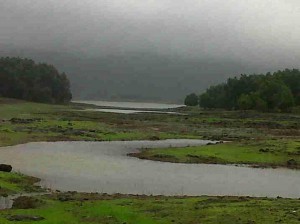 Valvan Dam provides water to the nearby Khopoli Power Plant. Constructed to provide hydroelectric power on the Indrayani River and Valvan Lake, the dam is home to a beautiful garden with vast expanse of landscaped plains. Built across the Kundali River, the dam supplies water to the Khopoli Power Station run by Tata Power at the foothills of the Sahyadri.
Valvan Dam provides water to the nearby Khopoli Power Plant. Constructed to provide hydroelectric power on the Indrayani River and Valvan Lake, the dam is home to a beautiful garden with vast expanse of landscaped plains. Built across the Kundali River, the dam supplies water to the Khopoli Power Station run by Tata Power at the foothills of the Sahyadri.
Ryewood Park:-
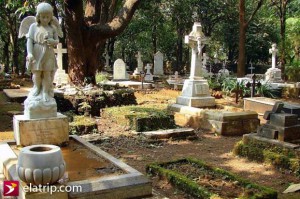 Ryewood Park has ample space with greenish lawns and playing grounds for children. The park is home to numerous varieties of trees, which are believed to be decades old. Once a botanical garden, the area today functions as a park. The park is thronged by tourists wishing to enjoy a relaxing picnic with their kids and companions. In the park, there is also an old Mahadeo Temple.
Ryewood Park has ample space with greenish lawns and playing grounds for children. The park is home to numerous varieties of trees, which are believed to be decades old. Once a botanical garden, the area today functions as a park. The park is thronged by tourists wishing to enjoy a relaxing picnic with their kids and companions. In the park, there is also an old Mahadeo Temple.
Bushy Dam:-
 Located about 6 km outside Lonavala, Bushy Dam is one of the most popular tourist spots in the state of Maharashtra. This small dam nestled in the forests attracts a large number of people all year round and more so in the monsoon months. During monsoons, the water running over the steps of the dam creates a thrilling waterfall. On the weekends of the monsoon months one can usually spot several tourists sitting on the steps, as the water from the Bushy Dam flows over them.
Located about 6 km outside Lonavala, Bushy Dam is one of the most popular tourist spots in the state of Maharashtra. This small dam nestled in the forests attracts a large number of people all year round and more so in the monsoon months. During monsoons, the water running over the steps of the dam creates a thrilling waterfall. On the weekends of the monsoon months one can usually spot several tourists sitting on the steps, as the water from the Bushy Dam flows over them.
Lonavala Lake:-
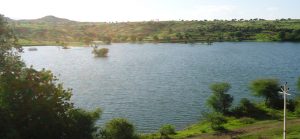 Lonavala Lake is located at a distance of 1.5 km from the city. Known as the Monsoon Lake, the lake gets dried up during the winters and gets filled with water during monsoons. Built around 1876, the lake and the adjoining area are popular picnic spots. Indrayani River is the source of water for the dam. Owned by Central Railway and encountered on the way to INS Shivaji, the lake enables tourists to enjoy a relaxing picnic.
Lonavala Lake is located at a distance of 1.5 km from the city. Known as the Monsoon Lake, the lake gets dried up during the winters and gets filled with water during monsoons. Built around 1876, the lake and the adjoining area are popular picnic spots. Indrayani River is the source of water for the dam. Owned by Central Railway and encountered on the way to INS Shivaji, the lake enables tourists to enjoy a relaxing picnic.
Bedsa Caves:-
 Bedsa Caves is situated near Kamshet, between Kadde and Bedsa. Known for their pillars that are adorned with the image of lions, these are considered to be among the oldest caves in Maharashtra. Dating from 60 BC and consisting of two caves, these can be reached through a number of steps lying on the sloppy hilly location.A beautiful stupa is enshrined in the main cave known as Chaitya, the prayer hall. This cave has four 25-feet high pillars that support a ribbed roof. This roof is also supported by orthogonal pillars. The 25 pillars of the main cave are embellished with carvings depicting elephants, horses and bulls.
Bedsa Caves is situated near Kamshet, between Kadde and Bedsa. Known for their pillars that are adorned with the image of lions, these are considered to be among the oldest caves in Maharashtra. Dating from 60 BC and consisting of two caves, these can be reached through a number of steps lying on the sloppy hilly location.A beautiful stupa is enshrined in the main cave known as Chaitya, the prayer hall. This cave has four 25-feet high pillars that support a ribbed roof. This roof is also supported by orthogonal pillars. The 25 pillars of the main cave are embellished with carvings depicting elephants, horses and bulls.
Amrutanjan Point:-

Amrutanjan Point is located just at the start of the Khandala Ghat. By standing at the viewpoint, tourists can avail aerial views of the Duke’s Nose as well as the town of Khopoli. End of the first hill bears a sign mentioning the start of Amrutanjan. Amidst the beautiful valley located below the viewpoint, tourists can enjoy a family picnic.
Celebrity Wax Museum:-
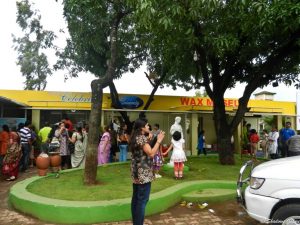 Celebrity Wax Museum was founded by Sunil Kandaloor, a 38-year-old wax artist from Kerala. Located at a distance of 5 km from the destination in Lonavala, the museum was inaugurated by minister Ramesh Shendge. At the museum, tourists can view wax images of Rajiv Gandhi, Benazir Bhutto, Michael Jackson, Adolf Hitler and Oscar winner, Rasool Pookutty. The museum is also home to images of Saddam Hussein, Indira Gandhi, Mahatma Gandhi and MS Subbulakshmi. Image of Chhatrapati Shivaji is the highlight of the museum. In addition to these, the museum is also home to images of Shirdi Sai Baba, and Jawahar Lal Nehru, along with wax models of many famous musicians, politicians and social workers.
Celebrity Wax Museum was founded by Sunil Kandaloor, a 38-year-old wax artist from Kerala. Located at a distance of 5 km from the destination in Lonavala, the museum was inaugurated by minister Ramesh Shendge. At the museum, tourists can view wax images of Rajiv Gandhi, Benazir Bhutto, Michael Jackson, Adolf Hitler and Oscar winner, Rasool Pookutty. The museum is also home to images of Saddam Hussein, Indira Gandhi, Mahatma Gandhi and MS Subbulakshmi. Image of Chhatrapati Shivaji is the highlight of the museum. In addition to these, the museum is also home to images of Shirdi Sai Baba, and Jawahar Lal Nehru, along with wax models of many famous musicians, politicians and social workers.
Shivlinga:-
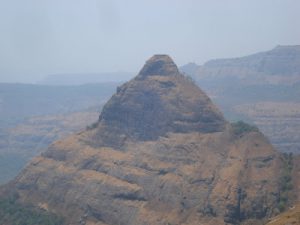 Shivlinga is encountered on way to Tiger’s Leap. ‘Swayambhu’, as it is often called, the mountain resembles a shivlinga. From the site, tourists can get an aerial view of the deep valleys around Tiger’s Leap and the Sahyadri Mountain Ranges. At the snack shop located at the site, tourists can devour tea and hot bhajiyas (an Indian fried snack).
Shivlinga is encountered on way to Tiger’s Leap. ‘Swayambhu’, as it is often called, the mountain resembles a shivlinga. From the site, tourists can get an aerial view of the deep valleys around Tiger’s Leap and the Sahyadri Mountain Ranges. At the snack shop located at the site, tourists can devour tea and hot bhajiyas (an Indian fried snack).
Bhushi Lake:-
 Bhushi Lake is located at a distance of 5 km from Lonavala. A popular picnic spot, the lake can be reached by availing buses running on the INS Shivaji Road. Beside the dam lies a beautiful waterfall that is also a popular picnic spot. Area around the lake also contains many shops selling rubber slippers, and small restaurants offering snacks and tea. The lake is enveloped by green hill and small waterfalls.
Bhushi Lake is located at a distance of 5 km from Lonavala. A popular picnic spot, the lake can be reached by availing buses running on the INS Shivaji Road. Beside the dam lies a beautiful waterfall that is also a popular picnic spot. Area around the lake also contains many shops selling rubber slippers, and small restaurants offering snacks and tea. The lake is enveloped by green hill and small waterfalls.
SHOPPING:-Â
Khandala and Lonavla are famous for their fast food. The most popular local delicacy, ‘Chikkis’ hold a place of importance in this hill station, as in Lonavla. ‘Maganlal and sons’, ‘Navratna Chikki’ and ‘the National Chikki market’ are some of the best places where these popular knick-knacks are available.
FOOD:-
Like every tourist destination, Khandala also gives prime importance to food and fast food. If you feel like savoring local delicacies, then there are quite a number of local vendors who sell the perfect ‘vada pav’ all over the town. If you are a vegetarian, then this is truly a vegetarian’s paradise! Gujarati cuisine is also available aplenty in Khandala.

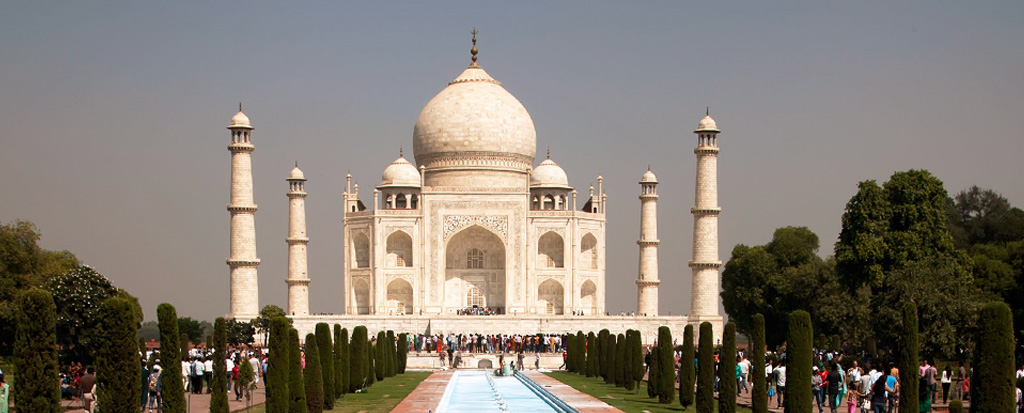


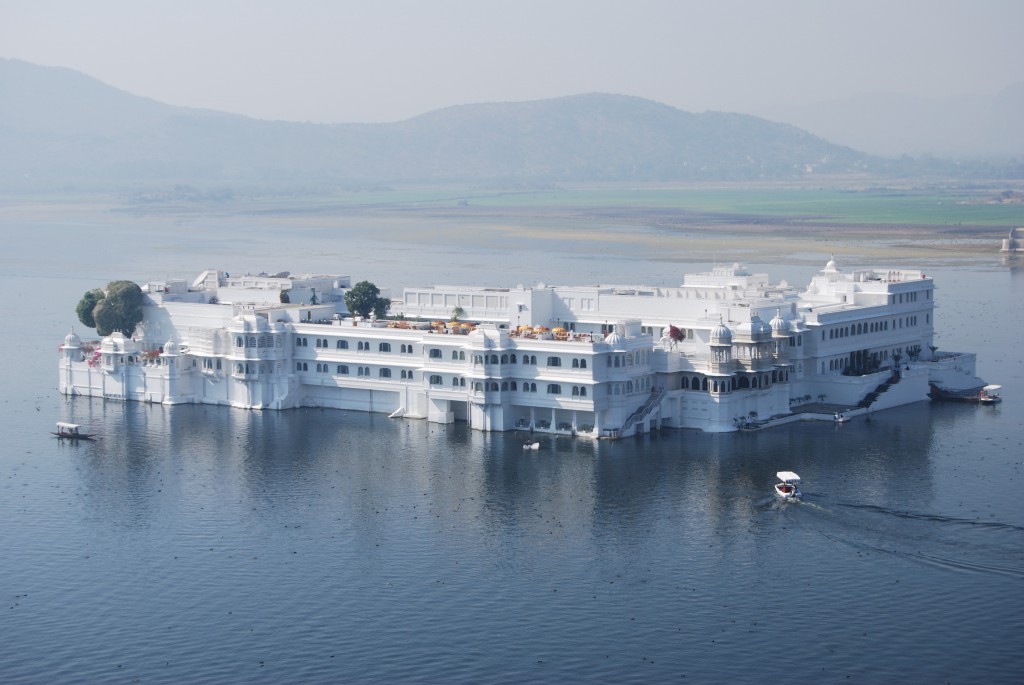
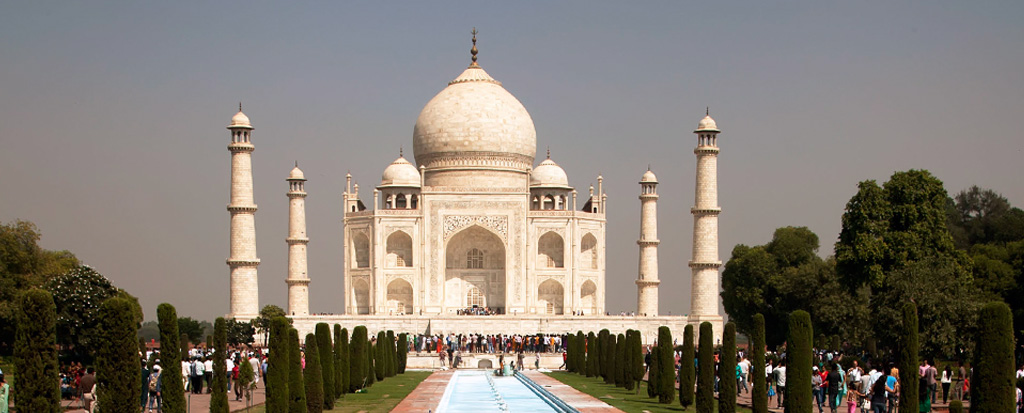
Recent Comments